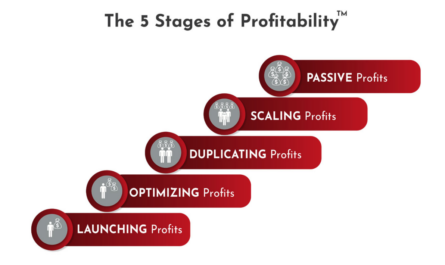Waste removal makes room for what marketing will bring in
By Dr. Sami Bahri
“It is amazing that you tackled practice management through operations!” a consultant remarked during a presentation on lean management. “I‘ve always done it through marketing,” he added.
“You attract new patients through marketing, while I do it through treatment efficiency; two different approaches!” I replied.
Such remarks make you wonder whether marketing or operational excellence will be more effective at improving dental management. They are both major components of any business system and we might think that we are already focusing on operations and marketing at the same time. But a simple analysis might show we are not.
Does dentistry rely on marketing, operational excellence or both? The answer is likely to be revealed in the emails we receive regularly. As you already know, if an offer is repeated, it would mean that it’s generating sales. One of those recurring offers is the promise to increase the number of new patients by 15 to 50 percent. That repetition indicates that a good number of dentists favor the marketing approach; otherwise, marketers would have stopped focusing on attracting new patients.
On the other hand, you will not find many emails that promise to teach us operational excellence. And the few that do, usually talk about creating a whole package of business systems to achieve operational efficiency.
The problem is that even when those systems are well managed, they are estimated to contain up to 80 or even 90 percent of process waste. Waste represents the gap between the current state of our processes and perfection. While its presence is undesirable, learning how to identify and eliminate it is a major opportunity for improving quality, cost, speed, productivity and moral.
Multiple systems present another problem; they tend to disconnect. Over time, they could even compete against each other. Lean managers avoid this problem by thinking of the whole business as a unique system in which all parts need to work in synchrony to maximize the performance of the business as a whole.
Now that we have discussed marketing and operational excellence, we wonder what the future holds for those who rely on marketing, and for those who rely on operational excellence.
This was the trap
If we believe that history is a good forecaster, we will need to consider what Taiichi Ohno, the creator of the Toyota Production System, wrote in 1988. In his book “Just-In-Time for today and tomorrow,” he explained why Toyota’s competitors failed to sustain profits in times of economic crisis:
“… corporations that emphasized increased production felt that increased sales, rather than innovative methods to eliminate waste, reflected success. This was the trap. Wastes are direct obstacles to profit. No matter how high the sales, valuable profits can dissipate in the form of waste. “
This could well be the most enlightening paragraph written in modern management (in my personal judgment, of course). Its value comes from being written in hindsight, after Ohno’s success has provided every proof to back up his claim that increased sales could be a trap.
Relying on marketing alone is a trap because it works well in good times but fails in bad times, whereas relying on operational excellence works all the time.
To prevent confusion, I am not against attracting new patients. It would be risky, however, to attract them without improving processes through waste elimination. It would have implications at the promotional and the operational levels.
- At the promotional level, if operations fail to meet their standards, patients lose trust; all advertising efforts could turn against the practice instead of helping it. On the other hand, if operations exceed patients’ expectations, advertising becomes much easier and more effective.
- At the operational level, as you remember, our motions generate either value or waste. Marketing increases value and waste simultaneously, causing us to work harder if we seek more results. To the contrary, Lean thinking reduces waste, allowing us to work less and still get more results (see figure 1).
We should always start by reducing waste in our processes to generate more capacity. Consequently, we will create room for more new patients without adding staff members, and without straining the existing staff or systems. Only when that room has been created and we have put in place systems to constantly reduce waste and increase capacity, should we pursue an aggressive marketing strategy to attract new patients.
A paradigm shift is needed
I invite our profession to catch up with manufacturers and embrace the advancements in business management. Lean management is a paradigm shift that changed operations management starting in the 1940s, but a similar shift has not happened in dentistry yet.
Instead of relying mainly on sales volume, Lean managers improved their operations by removing waste. That is an important point, because when we rely on sales, we are virtually saying, “Let’s get the patients in; we’ll figure out how to serve them later.” We usually end up working very hard on fixing unexpected problems. This approach resembles gambling with our most vital asset, our credibility.
But when we rely on operational excellence, we are virtually saying “let’s create good processes that will exceed our customers’ expectations, then we’ll invite them to use our services.” This approach is safe, solid and sustainable. It allows us to differentiate our practice and makes marketing so much easier that it could become unnecessary altogether.
Lean management has proven more successful than the current management systems. It has been successful with manufacturers like Toyota, with dental practices like Bahri Dental Group—where we were able to produce the same amount of dentistry using 40 percent fewer resources, and with healthcare institutions like Thedacare, Virginia Mason, the University of Pennsylvania Medical System and others.
Lean is an idea which time has come; let us embrace it now and improve everyone’s life.





